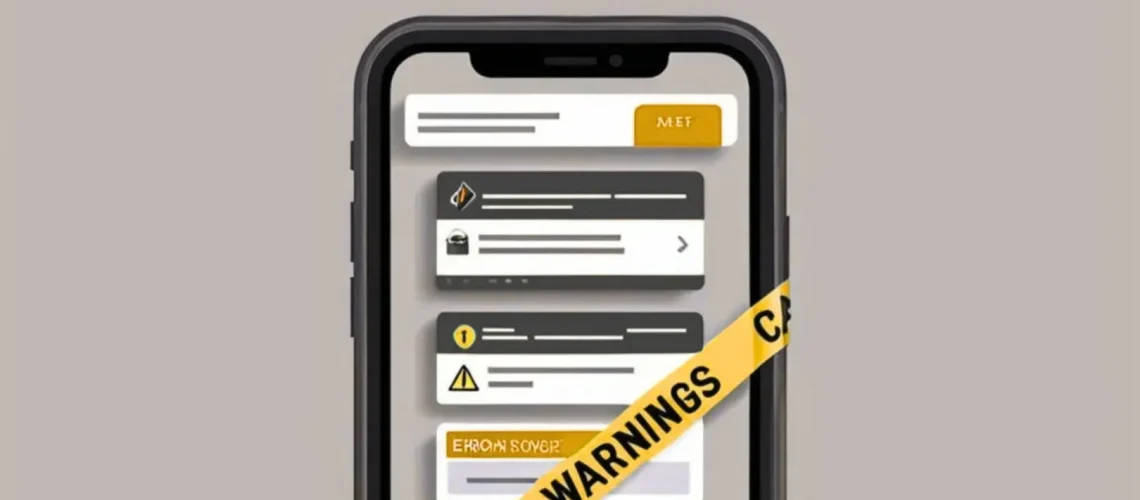Launching a mobile app is an important step in your development journey. However, success depends on avoiding common mistakes that can ruin your app before it even reaches users. The mobile app market expects perfection from the very beginning; just one mistake during development or before launch can result in low user adoption, bad reviews, and wasted resources.
Critical errors such as rushing through beta testing or underestimating the importance of pre-launch marketing can greatly affect your app’s chances of success. These oversights often lead to technical problems, lack of visibility, and difficulty gaining initial traction in the competitive app stores.
Proper planning and careful execution are essential for a successful app launch. By understanding and actively avoiding these potential pitfalls, developers can greatly improve their chances of creating an app that resonates with users and achieves its goals.
1. Insufficient Beta Testing
Insufficient beta testing is a critical pitfall in mobile app development. Apps released without proper testing often face immediate user backlash due to crashes, bugs, and performance issues. These technical problems lead to high uninstall rates within the first 24 hours of installation, damaging the app’s reputation and future growth potential.
The Importance of Comprehensive Beta Testing
A robust beta testing phase requires systematic testing throughout the development cycle. This includes:
- Unit testing
- Integration testing
- User acceptance testing
These testing methods help catch issues at every stage of development.
Ensuring Consistent Performance Across Scenarios
The testing process should incorporate different devices, operating system versions, and network conditions. This ensures that your app performs consistently across various scenarios.
Assembling a Diverse Group of Testers
Successful beta testing relies on assembling a diverse group of testers who represent the target audience. These testers need clear guidelines, specific test scenarios, and structured feedback forms to report issues effectively.
Maintaining Organized Feedback Collection
Setting up a dedicated communication channel for testers helps maintain organized feedback collection and swift issue resolution.
2. Neglecting Pre-Launch Marketing Efforts
Pre-launch marketing is crucial for an app’s initial success. Without proper marketing strategies, apps often struggle to get discovered and gain popularity in crowded app marketplaces. To avoid this, it’s important to plan a marketing campaign at least 3-6 months before the launch date.
Building Anticipation
- Create a dedicated landing page to capture potential users’ email addresses.
- Use social media platforms to showcase app features, share development updates, and engage with future users.
- Include teaser videos, behind the scenes content, and exclusive previews in your pre-launch campaigns to keep the audience interested.
Expanding Reach through Partnerships
- Collaborate with influencers and tech bloggers to increase your app’s visibility.
- Reach out to media outlets early on to secure coverage for launch day.
- Prepare press kits with high quality visuals and compelling app descriptions to make it easier for journalists to share your story.
By implementing these strategies, which are detailed further in this pre-launch marketing strategy ideas blog post, you can effectively market your app before its launch and increase its chances of success.
3. Poor App Store Optimization
App Store Optimization is crucial for your app’s success. It involves optimizing your app’s listing on app stores to improve its visibility and increase organic downloads. Here’s why ASO is important and how you can do it effectively:
The Importance of ASO
A well optimized app listing can make a significant difference in attracting users and standing out from the competition. On the other hand, if you neglect ASO, your app may get lost among thousands of other apps, making it difficult for potential users to discover it.
Key Elements of Effective ASO
1. Strategic Keyword Placement
Keywords are the terms that users search for when looking for apps. To optimize your app’s metadata, you need to strategically incorporate relevant keywords while still maintaining your brand identity. This will help improve your app’s visibility in search results.
2. Compelling App Description
Your app description should not only include keywords but also be engaging and informative. Highlight the unique features and benefits of your app in a way that appeals to your target audience. Use persuasive language to convince potential users why they should download your app.
3. Eye Catching Visuals
Visual elements such as the app icon, screenshots, and preview videos are critical for grabbing users’ attention. Invest in professional design to create an attractive app icon that stands out among other apps. Use high quality screenshots and videos to showcase the key features and functionality of your app.
4. Positive User Ratings and Reviews
User ratings and reviews have a direct impact on your app’s search rankings. Apps with higher ratings tend to appear more prominently in search results, leading to increased visibility and downloads. Encourage satisfied users to leave positive reviews and promptly address any negative feedback to maintain a strong rating average.
5. Localization for Different Markets
If you’re targeting multiple countries or regions, it’s essential to localize your ASO strategy. This means adapting your keywords, descriptions, and visual elements to suit the specific preferences and cultural nuances of each market. By doing so, you can attract more users from different parts of the world.
4. Skipping Market Research and Validation
Market research is a critical foundation for successful app development. Many developers rush into coding without understanding their target audience’s pain points, preferences, and behaviors. A thorough analysis of competitor apps reveals market gaps and opportunities while highlighting potential pitfalls to avoid.
Creating a Minimum Viable Product allows developers to test core functionalities with real users before investing substantial resources. This lean approach helps validate assumptions and gather valuable feedback early in the development cycle.
Practical validation strategies include:
- Conducting user interviews to identify pain points
- Running targeted surveys through platforms like Google Forms
- Creating interactive prototypes using tools like Figma or InVision
- Testing different price points with potential customers
- Analyzing competitor reviews to understand user expectations
A well researched app idea backed by market validation significantly increases the chances of success and reduces the risk of building features users don’t want or need.
5. Neglecting Offline Marketing Channels
Many app developers make the mistake of only promoting their apps through digital channels. They believe that mobile apps can only be marketed online, which limits their reach and opportunities to acquire new users.
The Importance of Offline Marketing
Despite the dominance of digital marketing, offline marketing still matters in reaching potential users who may not see digital promotions. Traditional marketing methods such as print ads, radio commercials, and in person events are still effective. Here are some reasons why offline marketing is important:
- Local Reach: Offline channels allow you to target specific geographic areas and connect with local audiences.
- Tangible Experience: Physical materials like brochures or business cards can leave a lasting impression on potential users.
- Personal Interaction: Face to face interactions at industry conferences or trade shows can build trust and credibility.
How to Incorporate Offline Marketing
To create a well rounded marketing strategy, consider incorporating offline channels alongside your digital efforts. Here are some ideas:
- Partner with local businesses to promote your app through their stores or websites.
- Attend industry events and conferences to showcase your app and network with potential users.
- Use print media such as newspapers or magazines to advertise your app in targeted publications.
Connecting Offline and Online
It’s essential to connect your offline marketing efforts with your online presence. Here are some ways to do that:
- Include QR codes on print materials that lead directly to your app’s download page.
- Use memorable URLs in radio or TV ads that direct viewers to your website or app store listing.
- Promote social media contests or giveaways at events to encourage attendees to engage with you online.
By integrating both online and offline channels, you can increase brand visibility and reach a wider audience. This multi channel approach will help you establish a stronger market presence and attract more users to your mobile app.
Conclusion
Launching a successful mobile app requires careful planning and attention to detail. Mistakes like not testing the app with users or ignoring offline marketing can have a big impact on your app’s success. By being proactive and identifying potential problems early, you can set a strong foundation for your launch.
But remember, the work doesn’t stop after release. To thrive in today’s competitive market, you need to continually monitor performance, release updates, and respond to user feedback. Combining best practices in Mobile Application Development with robust Website Development strategies ensures a seamless, high-quality experience across platforms. Your commitment to ongoing support and improvements will ultimately define the long-term success of your app.





